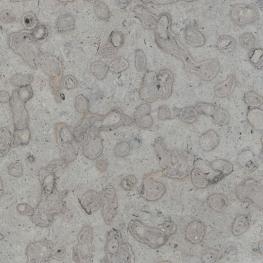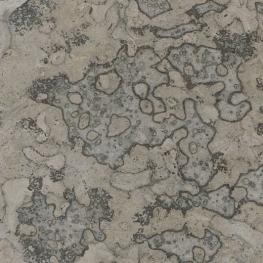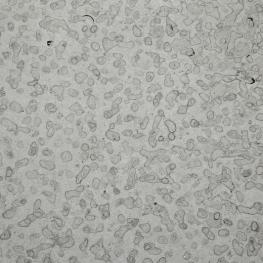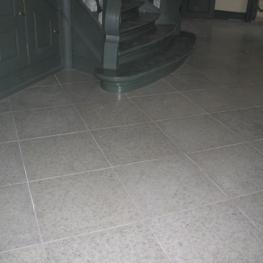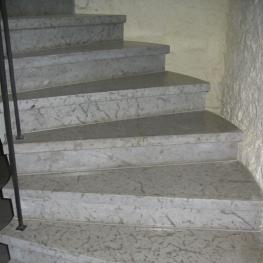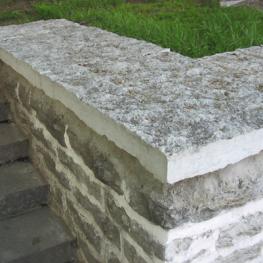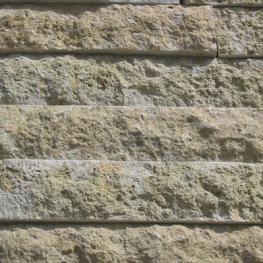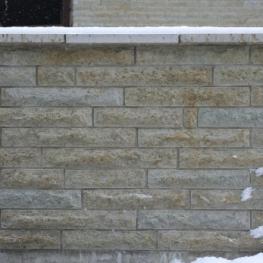Lasnamäe limestone
The mineral deposit area of Lasnamäe limestones reaches from the Pakri islands in Harju county to Narva, through Tallinn. Bigger limestones quarries, where Lasnamäe limestone is quarried are in Väo, Harju, Valkla and Maardu (in Harju county) and in Kunda (in Viru county). It is mostly whitish-gray tilish limestone, with layer thickness 5 to 30cm. Between the limestone layeres there are marl layers with variating thickness. Vertical darker coloured strokes, which are fillid with clayey and iron-richer material, are distinctive features for the main stone. Lasnamäe building limestone has been divided into 56 quarrying layers near Tallinn, each of them has a different name amongst people. Lasnamäe building limestone has formed during the Ordovicium era (439-500 M years ago) in high seas region from clayish lime mud.
Lasnamäe limestone has been used widely more than 770 years. The Dome Church of Tallinn (first mentioned in 1233 AD) is build partly on an old limestone quarry - 1 meter high quarry wall can be seen in the basement. Lasnamäe limestone was particularly needed at the end of the 13th centry, when the construction of the town wall of Tallinn began. Gravestones and other products made of Lasnamäe limestone were known export arcticles in the Middle Ages. These products were sold to Finland, Sweden, Prussia and later to Saint Petersburg.
All 56 layers of Lasnamäe building limestone have different qualities and therefore they have to be quarried layer by layer. Some layer have very good weather-resistance, but others can't last even for a few winters.
Better layers of Lasnamäelimestone from the Väo quarry have the following physical-mechanical qualities averagely:
- Volume weight - 2650 kg/m3 (EN 1936)
- Water-absorbency in volume percents - 0,9 % (EN 13755)
- Porosity - 2,6 % (EN 1936)
- Frost resistance - 48 cycles (EN 12371)
- Flexural strength - 17,4 MPa (EN 12372)
- Wear resistance - 19,5 mm (EN 14157)
Lasnamäe limestone is used for the production of honed or polished floor tiles, natural surface or cleft facade stones, cleft surfaced wall blocks, crazy pavings and cut to size tiles with natural surface.
Lasnamäe limestone has been mainly used in Northern Estonia. Old city of Tallinn has several building made of this stone. Some of the newer buildings for the building of which this stone has been used include Birgitta Monastery and KUMU, both of which are worth of taking a look at.

